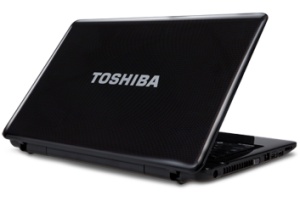Toshiba is planning on showing off next-generation displays and technologies for mobile phones, portable electronics, automotive applications, and 3D applications at the 2011 Society for Information Display (SID) International Symposium (May 17, 2011 to May 19, 2011). If you're unable to make the event, don't worry, the company has already spilled the beans on what it's been working on.
For mobile, Toshiba is featuring LTPS displays with up to 367 pixels per inch (ppi) resolution density, in sizes ranging from 3.3-inch to 4.0-inch with resolution formats ranging from Wide VGA (480 x 864) to HD (720 x 1280 resolution). These displays demonstrate advanced technologies such as high-contrast (up to 1,500:1), high-color (up to 92 percent NTSC), and wide viewing angle (up to H/V 176 degrees/176 degrees).
For automotive, Toshiba has a 9.0-inch Wide XGA (1280 x 720 resolution) TFT module for HDTV automotive entertainment applications, along with a 7.0-inch Wide VGA (800 x 480 resolution) TFT module with wide viewing angle for center information or navigation applications. Then there are three displays designed for high-reliability instrument cluster applications: a 5.0-inch Wide QVGA (480 x 240 resolution), a 4.2-inch Wide-QVGA (400 x 240 resolution), and a 3.5-inch QVGA (240 x 320 resolution). Lastly, there's a 3.3-inch Wide-QVGA display designed for rearview mirror application.
For 3D technology, Toshiba has two for demonstration. The first approach, Integral Imaging 3D, combines an ultra-high resolution display and a lenticular lens sheet to enable Multi-view natural viewing without 3D glasses, so the same image can be seen from multiple viewing points. Toshiba is showing off Integral Imaging in 21.0-inch Wide-XGA (1280 x 800 resolution) and 12.1-inch (466 x 350 resolution) flavors.
The second approach, Time Sequential, utilizes a backlight system incorporating a bi-directional lens sheet. The displays, a 3.0-inch Wide-QVGA (400 x 240 resolution) and an 8.0-inch Wide-VGA (800 x 480 resolution) 3D OCB panels, synchronize LED switching with left- and right-eye images to achieve stereoscopic (twin-eye 3D) viewing without special glasses while maintaining a fast response time and a wide viewing angle. This approach is 2D/3D switchable, and enables a thin, easy-to-assemble LCD panel utilizing its full native resolution without compromise.
"We are excited to exhibit several new and innovative products and technologies aimed at mobile, automotive and industrial applications," Clayton Bond, senior vice president of Display Devices and Components Business Unit for Toshiba, said in a statement. "Our advancements in system-on-glass in-cell technology and our approaches to 3D will enable future growth in new markets and applications."
